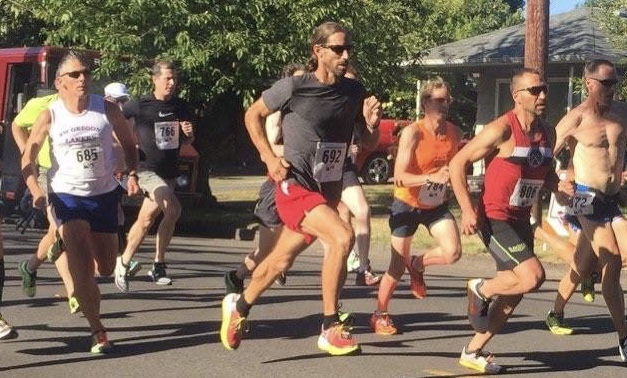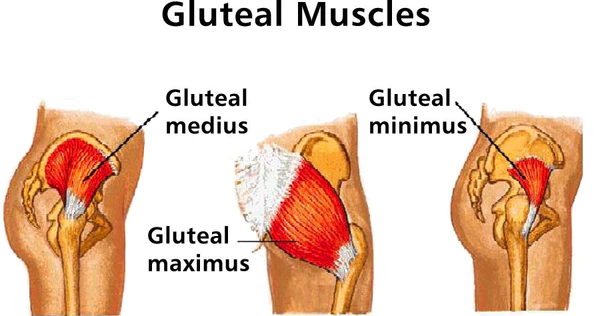The truth about injuries and running is that they are complicated. There isn’t a simple answer and there isn’t a one-case-fits-all situation. Many in the general public think that running and injuries are synonymous. How many of us have heard the ubiquitous, “Running will destroy your knees!” comment? Yes, running can lead to injuries, but, this doesn’t mean running injuries are inevitable. What’s even more important to realize is that while many of us, if we continue running for long enough, will at some point incur a running-related injury, there are things we can do to avoid or at least limit their occurrences.
I’m a running coach with over 25 years of experience and so have had my fair share of athletes that have suffered from a running-related injury while under my guidance. What’s also true is that for my college athletes I have access to experienced and well educated athletic trainers who are skilled at identifying the cause of many of these injuries. The most common cause of injury, regardless of the specifics, is muscle weakness, tightness, or imbalance. And just to be clear – the area that is weak, tight or otherwise out of whack is almost never the location of the actual injury. So what I’ve discovered over the years is that, in my experience, most running injuries are, in a word: preventable.

Before we go further, let me tell you that I approach injuries from the perspective of intimate personal experience. I’ve been coaching for over 25 years, but I’ve been a runner for about 45 years! Since college, my own running career has been riddled with them and I know first-hand the mental and emotional toll that injuries put on a runner. We are runners! Running is what we want to be doing. It is painful (and I don’t mean in the physical sense) when we are unable to get out there and cover ground, feel the wind blow through our hair and build up a good sweat. When we are injured, we aren’t having fun & we aren’t making progress towards our goals. As a coach, keeping my runners healthy is a top priority because I personally understand how difficult they are to deal with.
Prevention
What is the answer? Prevention!! If the most common cause of injury is muscle weakness, tightness or imbalance then we need to address those issues, right? We may well have been “born to run” in the evolutionary sense, but let’s face it: while we as a species are unchanged in over 100,000 years, our lives have changed dramatically!

Hours Spent Sitting
We spend a significant amount of time sitting – whether it be at work, playing video games, watching tv or sitting in traffic in our cars. There are many downsides to all this sitting! From a running perspective, it tightens our hips, hip flexors and deactivates our pelvic stabilizers – the gluteus medius and gluteus minimus. These muscles are crucial to shock absorption and preventing injuries lower down in the chain such as in the shins, knees and ankles. So, with an eye on prevention, how can we address these sitting related deficiencies? Fortunately we can do so relatively easily through a series of easy-to-do body weight strength exercises and stretches that don’t take up too much time. All of my runners are taught quick and easy routines to include in their weekly training to ensure they have strong and flexible hips.
Imbalances can be a bit more challenging to discover, so it’s not a bad idea to seek out a physical therapist or sports medicine doctor for a pre-training evaluation to identify any issues. Someone trained to run you through a series of fairly straightforward muscle tests can quickly locate anomalies at which point they can either prescribe remedies or that information can be brought to your coach who can incorporate specific exercises to bring you back into balance.
Find a Good Coach
The next most common cause of injuries is probably related to training and that’s where the coach comes in. Here again, prevention is the key. A good coach will design a well thought out plan to get you from point A to point B that is rooted in sound training principles and exercise physiology. That plan will also take you and your personal situation into account. I can’t tell you how many times I’ve heard runners bantering about the latest workout that some current great runner recently completed prior to winning a race or setting a record. What needs to be understood is that workout is just a tiny piece of a much larger puzzle that likely began years before. Smart and effective training is one that is laid out over time that allows the body to develop and progress, but in a manner that limits or eliminates injuries and illness. Not giving yourself enough time to prepare, rushing into a plan or just plain being impatient often has negative results. We all know that runner who seems invincible and can get “in shape” in just a few quick weeks of training (I had a high school teammate like this!), never seems to get hurt, and wins all the races. Unfortunately most of us aren’t like that and so we must be smarter. Using a coach can be extremely beneficial here because we are emotional and ambitious and it’s much easier for a coach to be dispassionate and analytical when it comes to creating a training plan – one that helps us meet our goals, but includes the necessary patience built in. Once the plan is implemented a good coach will monitor the progress and make the necessary changes along the way. It’s extremely rare for a training plan to work out exactly as written, but instead require constant small modifications, adjustments and tweaks. The coach and the athlete work together to communicate needs and results and at the end you get a happy and healthy athlete!

Resilience could be the answer!
Lastly I want to address the idea of physical resilience. I know of a runner local to me who in his prime, I believe, had the speed and endurance to be a world-class distance runner. The 5000m probably would have been his best distance. But, while he did have some very impressive results, he never made it to that higher level of even national class. Like injuries in general, the answer is complicated, but in my opinion he lacked another piece of the talent puzzle – resilience. In order to gain fitness you have to be able to train consistently over time. If you are constantly getting injured then you lack the consistency necessary to progress to a higher level. Consistency is an often overlooked component to successful training and racing. But it’s vital to your success!! It’s what separates the good from the great! Resilience is what allows for long-term consistent training to occur. Some have it, as a built in talent, others must develop it!
So how do we develop resilience? A great place to begin is in the weight room. Strength training will help you with power and speed to a certain extent, but where it really helps distance runners is in developing resilience; the ability to sustain higher levels of training without injury. If we can remain injury free, we can train longer and at higher levels allowing our fitness to grow and our racing times to come down. So if you are looking for that next piece of the puzzle, and you are already training at a fairly high level. Or if you are struggling with injuries and are already addressing the components we mentioned above, then adding strength training could be the missing ingredient!! With my athletes I encourage strength training and it’s something that I design and incorporate into their programming.
Like I said at the start of this article, running injuries are complicated and the potential causes and answers are nearly limitless. This blog post could easily go on and on, but in the interest of your time and my own, I will end this here with an eye on picking up this thread in the future to address some other thoughts on injuries: common running injuries, their causes and prevention. I hope you are currently enjoying an injury-free streak of running and can head out the door for a run. Have fun! You got this!
